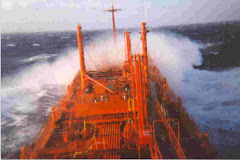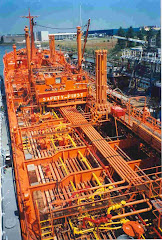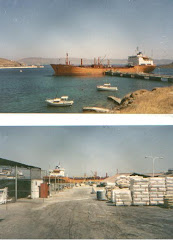After repeated ATM share offerings with massive dilution, Dryships (DRYS) has now turned to the bond market for additional capital with a new US$ 400 mio offering (initially US$ 300 mio). The deal also includes a US$ 150 mio loan in notes to Deutsche Bank, the sole bookrunning manager of the deal. As a feature, the deal appears to offer investors a convertible arbitrage where they can take a short position against the company common share value so they can hedge their investment.
Dryships was badly hit by the financial crisis and precipitous drop in the dry bulk market last year. The company had been outperforming its peers with a more speculative policy of older vessels, shorter term employment, building up the fleet by riding the market up and selling older tonnage to finance and expand into new tonnage. Bank leverage rose accordingly.
George Economou's decision to use Dryships to support his foray into off-shore drilling purchasing OceanRig changed the nature of the company. He privately booked several additional oil rigs and in his usual practice shifted them to Dryships, where there was broader access to capital markets to support the transaction.
An oil rig is a substantially higher capital intensive investment than a ship. The oil rig assets on the company balance sheet quickly overshadowed the shipping operation. Capital needs increased geometrically.
Economou was constrained to posture his fleet with longer term employment to support the burden of ever increasing debt on the company balance sheet under the strain of this new scaling up in another sector. The longer employment profile for the bulk carriers proved a timely move in view of the subsequent financial meltdown in the fall of 2008.
Economou was constrained to posture his fleet with longer term employment to support the burden of ever increasing debt on the company balance sheet under the strain of this new scaling up in another sector. The longer employment profile for the bulk carriers proved a timely move in view of the subsequent financial meltdown in the fall of 2008.
The crash in freight rates and asset values put Dryships into default with its senior lenders that has taken months to renegotiate this year. At the same time, Economou had to restructure the aggressive company capital expenditure program that included both dry cargo vessels and oil rigs. The company was obliged to cancel a large number of new building orders and forfeit deposit money as well as to take substantial asset impairment charges.
To cover the financial hemorrhaging, Dryships embarked upon a series of ATM (at the market) share offerings to increase its capital by massive share dilution. As things have stabilized in the dry cargo market and the oil rigs on order are coming up for delivery, presumably Economou wants to avoid further share dilution by turning to the bond market, hoping to lock in good terms in the face of future increase in interest costs.
The short hedge feature is likely a sweetener for potential hedge fund investors, who are a mainstay investor market for the shipping sector. Most hedge funds have considerable experience in commodities . There is close relation between shipping freight markets and commodities markets. Spot rates are driven by inventory levels and the pricing structure between the derivatives and physical markets.
The higher than expected interest cost of the recent Genmar bond issue, however, would appear to create some clouds on the probable pricing for the Dryships bond issue. With Dryships there is always an ongoing debate on how much new capital is being used to refinance and manage existing debt as opposed to going into fresh investments.
DryShips's two semi-submersible units and four drillships on order for 2011 delivery have recently been valued by analysts at US$ 3.7 bio against the value of its bulker fleet and above-market charters, which is barely half that at US$ 1.9 bio. Most analysts are in agreement that Dryships will have no problems in securing contracts and employment for its oil rigs, but divergence on rate forecasts drives the stock recommendations for the company. Nordea tends to be cautious whilst Lazard is showing some optimism for DRYS. Both are placing their emphasis on the offshore drilling market and assuming firmer oil prices in 2010.








